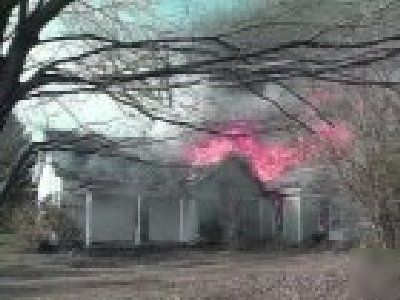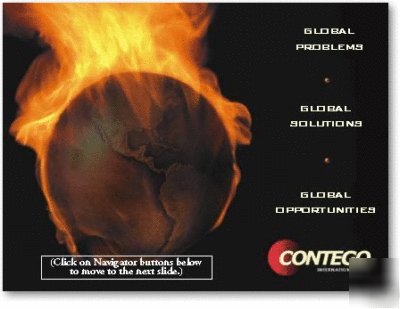Tristate Machinery Dismantlers Forum > ILLINOIS
> Machine Parts
> New
> Spray foam insulation - 5 gallon pail
Spray foam insulation - 5 gallon pail
Contego Passive Fire Barrier is a heavy-bodied, single-part latex designed for use on construction materials such as Oriented Strand Board (OSB), Structural Insulated Panels (SIPS), framing lumber, plywood, trusses, drywall, doors, and more. May also be used on aluminum and steel sheets, round and box steel columns.
* Protects from heat and fire
* Smooth, thin, decorative finish
* All components are non-toxic latex
* May be sprayed, brushed, or rolled
To view sprayfoam insulation data
1. Fire doubles every 30 seconds.
2. Over 2 million fires are reported to fire departments each year in the USA.
3. New York City alone has more fires each year than Japan.
4. There are over Ten Billion Dollars in property damages in the USA each year from fire.
5. Despite the use of sprinklers and smoke alarms, the USA has the worst fire fatality rate in the industrialized world.
6. Fires kill more Americans annually than floods, hurricanes, tornadoes and earthquakes combined.
7. In deadly home fires 14% had working smoke detectors and alarms.
8. Smoke detectors failed to operate in 44% of reported fires.
9. You have no sense of smell when sleeping.1
10. Almost 40% of fire victims die in their sleep.
Contego Intumescent Primer (Thin film)
1. How long have fire retardant paints been around?
In the early 1950's, flame retardants first appeared and offered a new level of protection from commercial and residential fires. While they were not able to arrest fires, they were effective in slowing the development of a fire offering additional time to evacuate a facility and providing firefighters more time to react to a fire. These first generation coatings were expensive, difficult to apply, and foul-smelling. The industry began to realize that virtually all flame retardants were formaldehyde- based and, therefore, extremely carcinogenic.
2. What is an "intumescent" fire retardant paint?
Work began in the mid-1980's to perfect a new genre of coatings called intumescent reactants. The term "intumescent reactant" (IR) generally defines a type of coating that expands when exposed to high temperatures or direct flame, caramelizing and forming a "char barrier" that lifts off the surface, or substrate. In so doing, these products offer an effective and durable barrier that cut off the fuel source a fire needs to develop.
3. If Intumescents have been available for 20 years, why am I just now hearing about them?
Until now, most intumescents met with only limited success because they had obvious deficiencies and limitations. For example, some products that claimed to be non-toxic and non-carcinogenic still used formaldehyde and other toxic substances. Other products were based on fire resistant chemicals suspended in water, so they did not bond well to surfaces and other coatings, like paint, did not bond well to them. The water matrix also caused the char barrier to rise too far off the substrate, giving a fragile char barrier that was easily compromised. Once compromised, fire could undermine the rest of the intumescent layer rendering it useless. Still others were unacceptable as a coating because of their unpleasant odor, lumpy texture, and their inability to go through a paint sprayer without clogging the nozzle.
4. Where have intumescents traditionally been used?
In spite of their shortcomings, intumescents have played a valuable role in high fire risk situations such as oil refineries, offshore oilrigs, tankers, and large chemical manufacturing facilities. Due to their shortcomings, most previous intumescents had to be applied with a trowel or specialty sprayer requiring a highly-trained operator. In addition, they had to be applied in a thick layer (150 to 200 mils) to achieve acceptable protection.
5. What's the difference between Contego's Intumescent Primer and traditional intumescent reactants?
Our coatings apply like regular paint. No special tools are required. You can use a brush, roller, or standard sprayer. It smells, feels, and applies like high-quality primer. It has a broad range of applications since the polymer base allows it to bond to many different kinds of substrates. It is non-carcinogenic and non-dermatic. It's completely safe for use around children and pets. In most situations, two coats (20 mil wet/14 mil dry) gives as much protection as 150 to 200 mils of the old fashion intumescents. Last but not least it's very economical to use.
6. What kind of substrates can Contego's Thin Film Intumescent Latex be used on?
It protects the interiors of buildings, steel superstructure, aluminum, wood, drywall, and virtually any porous surface-including Oriented Strand Board (OSB), and Structural Insulated Panels (SIPS).
7. Why does steel need to be protected from fire?
The application for metallic superstructures, like roofing systems, is extremely important. Although steel obviously does not burn, when exposed to fire, it distorts, causing the roof to collapse. Contego products reflect heat, reducing the risk of structural collapse.
Contego's PFB Primer comes in white only.
9. What if I want to add a tint to the primer?
Due to the high solids content of the Primer, it does not react to color tinting like normal latex. At most, you will be able to get a light pastel shade when tinting.
10. Do I need to use a top coat with the primer?
When the primer is used on an exposed external surface you should apply a protective top coat of enamel or acrylic. Other than for decorative purposes there is no requirement to top coat internal surfaces that have been treated with Contego Latex Fire Barrier Primer.
11. What kind of top coat is recommended?
Any high-quality 100% acrylic latex, oil base, enamel, or latex finish coat will work. Top coating is optional. To add color or sheen to surfaces Contego PFB may be top coated using virtually any alkyd, or enamel paint as soon as the intumescent coating is dry to the touch. To top coat with acrylic or latex spray or roll initial color coat DO NOT RE ROLL OR TOUCH UP until initial color coat is dry. Failure to wait for first color coat application of acrylic/latex to dry may result in the color coat smearing or rolling off on the roller. Once first color coat of latex/acrylic is dry apply second coat. Top coating does not reduce intumescent capability.
12. How long does the primer continue to protect?
It will last as long as the primer adheres to the substrate and is not damaged or penetrated.
13. Have your products been government tested and approved?
14. Who has used this product?
Many different individuals and companies have used our products; Holiday Inn, LL McDonald (Big Dig Boston), Canadian Tire Warehouses, and the Canadian National Fire Testing Laboratory are just a few examples.
15. Does Contego protect against fires caused by accelerants such as gas, oil, diesel fuel, etc.?
The results of fires caused by petroleum accelerants are usually the same as with a non-accelerated fires. The fire just burns more dangerously and furiously until the accelerant burns off. But in the end, our products produce the same results.
16. Do you guarantee this won't burn?
Very few things in this world are guaranteed 100%. These products are no different. Although we have not yet found one,there are probably situations where items treated with our products will burn. But the odds are greatly reduced, when compared to non-treated items.
17. Is this in any way harmful, allergenic, carcinogenic, or toxic?
No. Contego's Primer has no harmful side effects and releases no toxins even after having been exposed to fire. This is one of the advantages of our products compared to fire retardants of the past.
18. If I repaint a room do I have to reapply the primer?
No. Surprisingly, layers of paint actually make the char barrier tougher and more fire resistant than the primer itself.
Yes, so all products should be handled accordingly.
Several major underwriters are considering offering reduced rates to owners of buildings protected with Contego Thin Film Intumescent Latex. We will post this on the website as soon as we have been informed.
21. Can an existing building be treated with this product?
Yes. It's important, however, that the surfaces being treated are completely clean, dry, and free from oil residue.
22. Do you need a license or permit to apply this product?
23. Do I need any special equipment to apply this product?
24. Are there any critical storage issues?
Yes. Once opened, the contents should be used entirely. If any remains, do not attempt to reseal for use at a later date. Dispose of unused portion in an environmentally safe way according to local codes for paint disposal. Do not apply when temperature is below 0 Celsius (32 F). Do not allow contents to freeze.



